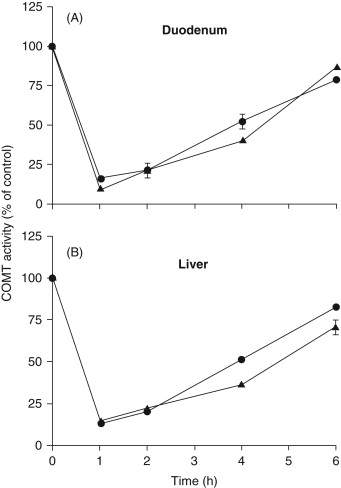
**Unraveling the Molecular Dance of Dopamine and Serotonin: A Stanford Discovery**
In the field of neuroscience, few revelations have showcased the sophistication and intricacies of the human brain like the recent advancements from Stanford’s Wu Tsai Neurosciences Institute. Published in the journal *Nature*, this pivotal research illuminates how two neurotransmitters, commonly known as the chemical messengers of the brain – dopamine and serotonin – engage in a synchronized “push-pull” interplay to modulate learning and behavior. This finding not only reinforces a long-standing hypothesis but also paves the way for groundbreaking strategies in addressing psychiatric conditions such as addiction and depression.
### **The Push-Pull Dynamic: Dopamine and Serotonin at Work**
Neurotransmitters serve as the brain’s communication tools, functioning as chemical signals that relay information between neurons. Among these, dopamine and serotonin have long been linked to reward, decision-making, and emotional control. However, their molecular interaction has remained a subject of much debate.
Led by graduate student Daniel Cardozo Pinto and his team, the Stanford study utilized state-of-the-art genetic and optical methodologies in mice to accurately monitor the interaction between these two neurotransmitters in a crucial brain region known as the **nucleus accumbens** – often labeled the brain’s “pleasure center.” This area is essential for processing emotions, motivation, and reward-related learning.
Their findings revealed that when mice were given a sweet reward, dopamine levels surged, signaling a “go” for reward-seeking behaviors. Interestingly, serotonin levels decreased at the same time, functioning as a “wait” signal to control impulsivity and promote long-term decision-making. Much like a vehicle needing both an accelerator (dopamine) and brakes (serotonin) to travel effectively, the brain depends on this dynamic equilibrium to steer behavior.
### **Understanding the Opponency Hypothesis**
For many years, researchers have contested whether dopamine and serotonin function in concert or in competition. This research compellingly supports the **opponency hypothesis**: while dopamine fuels reward-seeking and instant gratification, serotonin provides a counterbalance by fostering the ability to tolerate delays and contemplate future outcomes. Through their molecular “dance,” the brain fine-tunes its responses to rewards.
What distinguishes this research is its remarkable clarity. “It’s quite uncommon in science to obtain a result so clear-cut that it’s immediately recognizable,” noted Cardozo Pinto. The team also discovered that mice favored situations where both dopamine and serotonin were manipulated at the same time, affirming the importance of their interaction for effective learning and behavior.
### **Research Innovations: Behind the Scenes**
What facilitated such momentous discoveries? A blend of innovative techniques, such as **optogenetics**, allowed researchers to observe and control the activities of dopamine and serotonin systems concurrently in real-time. By genetically altering neurons in the mice, the activities could be turned on and off using specific light wavelengths. This precision enabled the team to decipher the complex interactions of these neurotransmitters like never before.
Studying only one neurotransmitter system at a time has often led to incomplete or contradictory interpretations of their functions. Monitoring both systems together not only provided clear evidence of their opposing roles but also unveiled mechanisms critical to reward learning that would be obscured when isolating a single neurotransmitter.
### **Repercussions for Psychiatric Disorders**
The real-world ramifications of this research are significant. Psychiatric disorders like addiction, depression, and anxiety are frequently linked to imbalances in dopamine and serotonin systems. The findings imply that instead of treating these conditions by targeting just one system (as in traditional treatments), a more effective method might be restoring the **balance** between dopamine and serotonin.
In the case of addiction, for example, the study depicts how an overactive dopamine “accelerator” associated with an underactive serotonin “brake” could intensify compulsive behaviors. Future treatments might concentrate on simultaneously diminishing dopamine signaling while boosting serotonin activity to recalibrate the brain’s reward mechanism and reduce addictive behaviors.
Similarly, in conditions such as depression, assisting serotonin in reclaiming its essential role in moderating negative thought patterns could support recovery. This dual-targeted strategy opens new avenues for more customized and effective therapies.
### **Glossary of Essential Terms**
– **Neurotransmitters**: Chemical messengers facilitating communication between neurons and regulating activities of the brain and nervous system.
– **Nucleus Accumbens**: A brain region that plays a key role in processing reward, motivation, and emotion. Commonly referred to as the brain’s “pleasure center.”
– **Optogenetics**: An innovative method employing light to control genetically modified neurons, enabling precise manipulation of brain function.
### **A Promising Future for Neuroscience**
In the dynamics of our actions, dopamine and serotonin manifest as two facets of the same coin – partners in a meticulously maintained balance. This study not only sheds light on their functions but also underscores the extraordinary complexity of the brain’s workings.